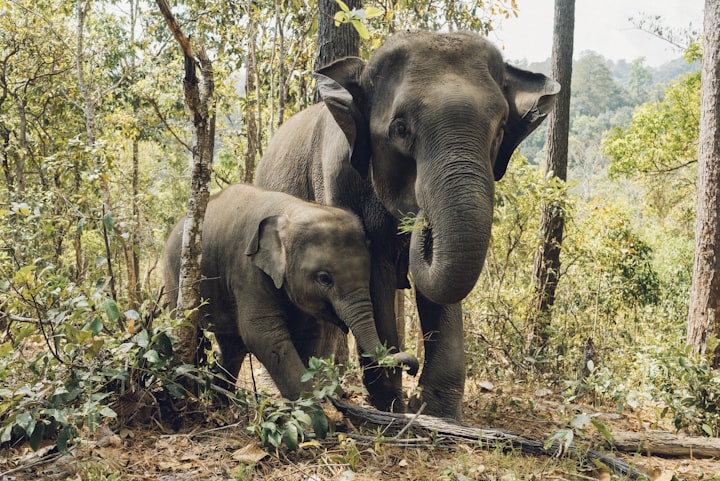
The extinction of certain animals could cause the collapse of many ecosystems. Many people are unaware of the true impact of animal extinction, as many of them contribute greatly to the way the environment runs. Here are nine animals with important roles in their environments that are also essential to the survival of their ecosystems.
1. Bees

Not only do bees collect pollen in order to create honey, but bees also contribute greatly to the fertilization of plants. According to onegreenplanet.org, bees "are responsible for pollinating approximately 250,000 plant species." This means that if bees went extinct, then the rate at which plants get pollinated would decrease significantly and the animals that rely on these plants for food would suffer. They would die of starvation and ultimately cause a huge ripple effect in the food chain.
2. Tigers

Tigers are a very prominent part of the top of the food chain. These animals feed off of plenty of smaller creatures, therefore keeping the population of the smaller animals at a constant pace. However, if tigers were to go extinct, then there would be more smaller animals eating all of the plants in the area. With a growing population, the amount of vegetation for these animals to feed off of will deplete, making it harder for many animals to survive.
3. Gopher Tortoise

The gopher tortoise is accurately named after the fact that they often dig burrows. Over 350 species rely on this tortoise to dig burrows for these animals to live in. Without this tortoise's amazing ability to build perfect homes for snakes, frogs, and more, it would be harder for these animals to find safe homes away from potential predators.
4. Gorillas

A Mountain Gorilla's predator would very likely rely on this gorilla for food that would last a long time because gorillas are such large animals. If these animals were to go extinct, then it's predators would have less options for food. They would not only eat more of other animals, but they'd have a higher chance of dying of starvation because of the lack of options.
5. Sea Otters

Otters eat many animals like sea urchins that would, without population control, take out entire kelp forests underwater. Otters greatly contribute to the kelp forest's survival by eating these harmful animals. Without kelp forests, many fish wouldn't have food to eat.
6. Sharks

There are a wide variety of endangered sharks, far too many to put into their own categories on this list. Sharks are essential to the survival of many species for two reasons. One, sharks tend to prey on marine life that is already sick and dying, therefore controlling the spread of disease among those fish. Secondly, the fish eat other predator fish. Without the sharks to regulate the population of other predator fish, the number of predator fish would outweigh the number of prey fish.
7. Elephants

According to onegreenplanet.org, elephants are responsible for the dispersal of seeds. They've reported that habitats with less elephants also have less trees, and habitats with more elephants have more trees. Ecosystems with a lack of trees could be detrimental to the survival of many animals who rely on trees for food, habitats, and more.
8. Whale

Like sharks, there are a few species of whale that are endangered. Typically, when a whale dies, its carcass becomes a bountiful food source for many underwater species. Also, whales eat a lot of sea creatures that help regulate their populations. If there was an imbalance of the populations among species, then eventually one would weigh out the other and more species could become extinct. Whale feces also provides natural nitrogen that helps fertilize underwater plants that feed many herbivore fish.
9. Horseshoe crabs

Horseshoe crabs provide food for many animals including birds, turtles, sharks, and more. Also, according to myfwc.com, horseshoe crabs produce a chemical called "Limulus Amebocyte Lysate." This substance is used to sterilize medical equipment and all drugs that are injected into a human body. This means that horseshoe crabs contribute to vaccinating us and any human surgery! Horseshoe crabs are not only important for ocean ecosystems, but also for the human health!
Final Thoughts
Every ecosystem relies on the delicate balance between each species that lives within it. If one aspect were to be removed, ecosystems could fall apart. We need to make sure to protect these animals not only for moral reasons, but also for practical reasons. We have to remember that we all share this planet and by extinguishing the existence of one, we could cause the extinction of many more.
Read similar: 10 Cool Nature Facts About Strange Animals, Plants, and More
About the Creator
Annie
she/her
I have a small sticker shop on Etsy called DynamiteArtStickers, so if you can, please check that out. The IG for it is @dynamiteart368.






Comments
There are no comments for this story
Be the first to respond and start the conversation.